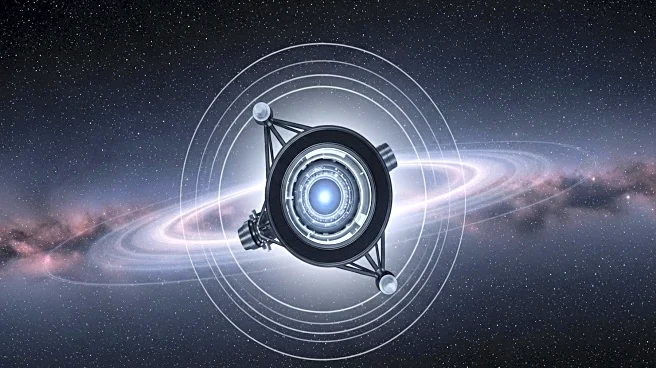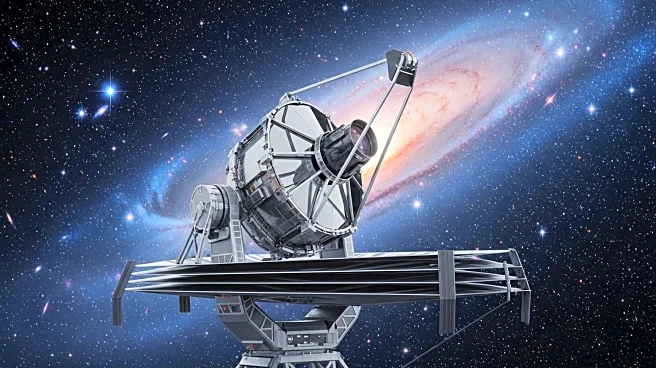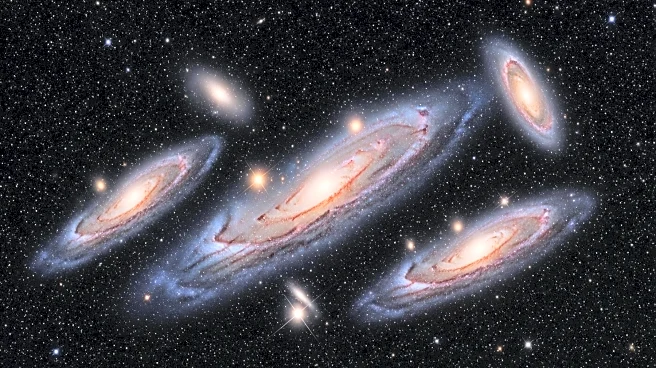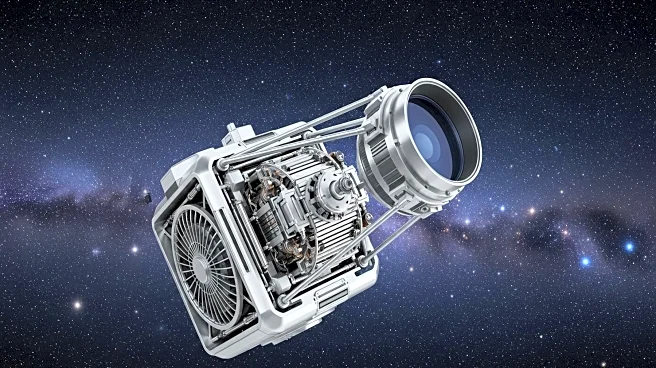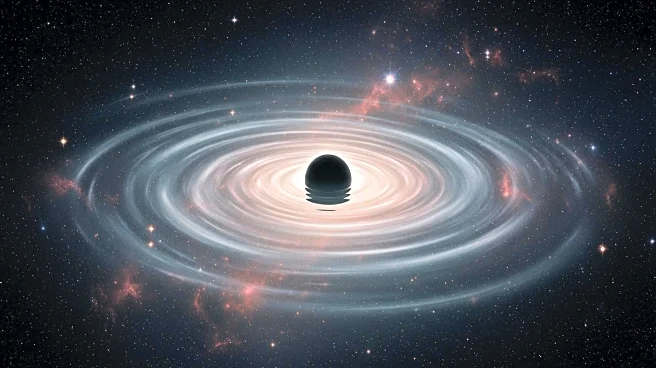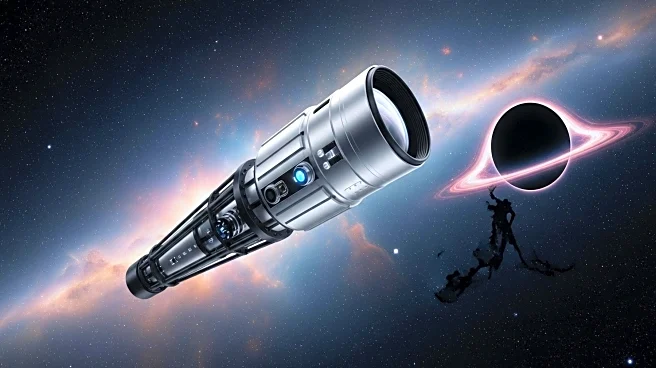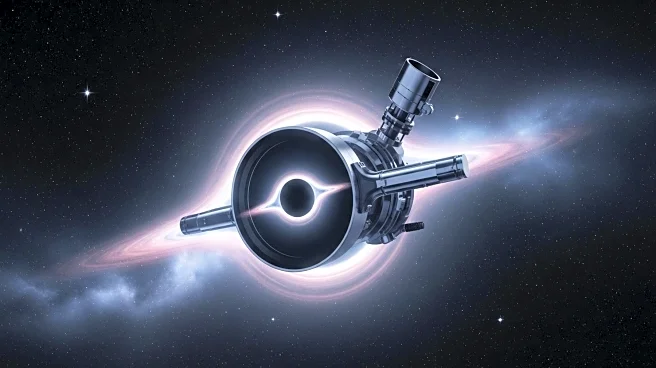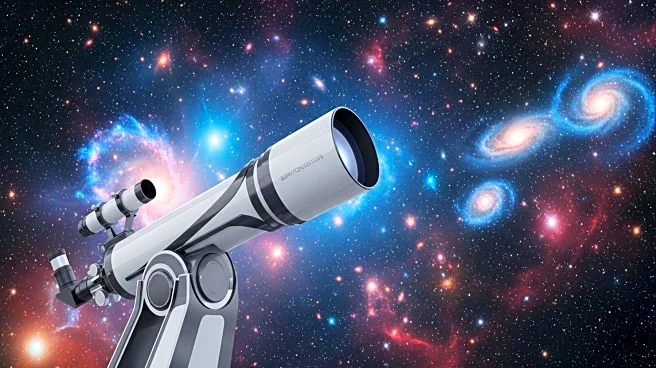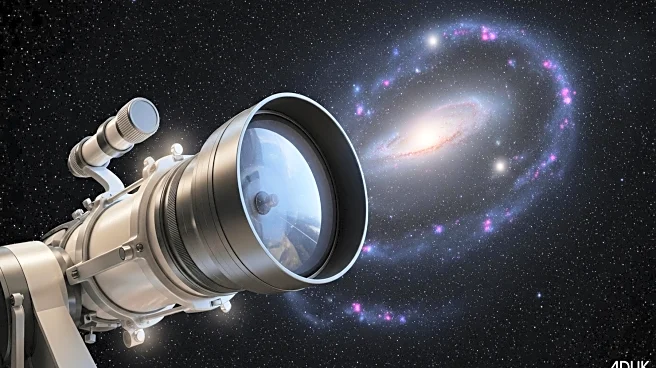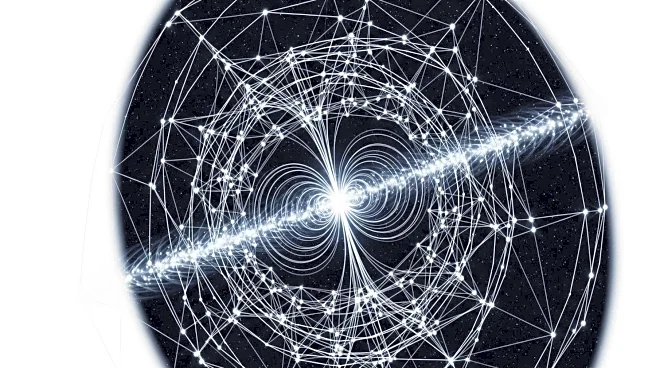What's Happening?
The James Webb Space Telescope (JWST) has potentially identified a primordial black hole, named QSO1, with a mass equivalent to 50 million Suns. This discovery was made by observing 'Little Red Dots' (LRDs) in the Epoch of Reionization, a period 600 million years after the Big Bang. The findings suggest that QSO1 could be a massive black hole seed in the early stages of accretion. The research, led by astrophysicist Ignas Juodžbalis, indicates that these LRDs might be early black holes, challenging previous assumptions about their nature.
Why It's Important?
The identification of primordial black holes could provide crucial insights into the formation of the universe's first stars and galaxies. Understanding these early black holes helps scientists piece together the cosmic puzzle of how galaxies and other celestial bodies formed. This discovery could reshape theories about the universe's evolution and the role of black holes in cosmic development.
What's Next?
Further validation of the findings is necessary, as the paper is yet to be peer-reviewed. Researchers will continue to study QSO1 and other LRDs to confirm their nature and understand their implications for early universe formation. The JWST will play a key role in observing these phenomena, potentially leading to groundbreaking discoveries about the universe's origins.
Beyond the Headlines
The discovery of primordial black holes raises questions about the fundamental processes of cosmic evolution. It challenges existing models and could lead to new theories about the universe's formation. The ethical implications of prioritizing such research over other scientific endeavors are worth considering, as it reflects the broader societal value placed on understanding our cosmic origins.
